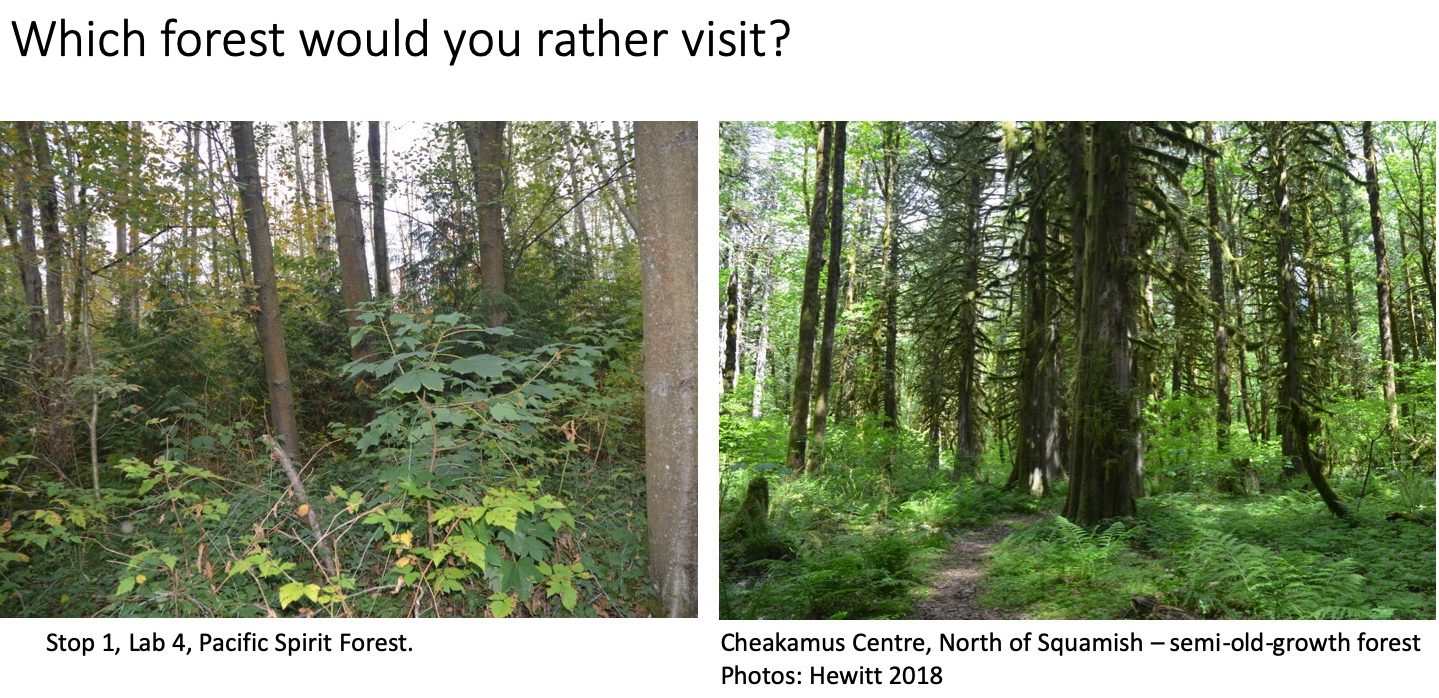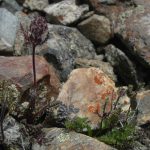Compare the two photos in Figure 8, below, and consider the question posed in the caption. The photo on the right was taken in a forest preserve at Cheakamus Centre, just north of Squamish, BC. It was logged somewhat less recently than Stop 2 in Pacific Spirit, with trees 125 years or older.

According to local interpreters at Cheakamus Centre, its protected forest lands support a relatively high plant diversity and a large proportion of the region’s culturally important plant species (Pers. Comm., Squamish nation member and local guide, Cheakamus Centre). If you get a chance to visit an old growth or ancient forest like this one, look for signs of structural and functional complexity: mossiness; a diversity of understory herb and shrubs; varied size and age structure (ie, massive trunks growing alongside younger, smaller stems); and wood in various stages of decay. The latter, decaying wood, is essential to feed and house insect populations and supply the sylvan food web.
Sadly, old growth forests are not well-represented in post-settler landscapes, with less than 3% of BC’s “most productive old-growth” forest remaining. Ongoing and recent (2021) campaigns to protect BC’s old-growth forests will continue to be instrumental in reshaping provincial logging policy (see this article, that quotes Dr. David Tindall, UBC), but will require continued vigilance to counter extractive western practices, and preserve biodiversity and local Indigenous peoples’ rights and values.



